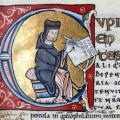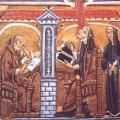220. Caroline Humfress on the Roots of Medieval Law
A discussion about Roman law and its reception in the medieval period, with ancient law expert Caroline Humfress.
Themes:
• C. Humfress and P. Garnsey, The Evolution of the Late Antique World (Cambridge: 2001).
• C. Humfress, Orthodoxy and the Courts in Late Antiquity (Oxford: 2007).
• C. Humfress, “Bishops and Lawcourts in Late Antiquity: How Not to Make Sense of the Legal Evidence”, Journal of Early Christian Studies 19 (2011), 375-400.
• C. Humfress, “Laws’ Empire: Roman Universalism and Legal Practice” in P.J. du Plessis (ed.), New Frontiers: Law and Society in the Roman World (Edinburgh: 2013).
• C. Humfress, “Law and Custom under Rome” in Rio, A. (ed.) Custom in the Middle Ages (London: 2012), 23-47.
• J. Duindam, J. Harries, C. Humfress, and N. Hurvitz, N. (eds), Law and Empire (Leiden: Brill, 2013).







Comments
Roman law as a source for modern political philosophy
This was a fascinating piece.
With regard to the sources of modern political philosophy, if the ancients are acknowledged then we tend to talk much about our debts to Greek philosophy, but my impression is that the debt we have to Roman law is rarely discussed. Maybe I am just not sufficiently familiar with the relevant authors... In any event, how it influenced us via medieval jurisprudence seems to be the next step, after understanding how Roman law was received in the medieval period... it is a complicated story and thank you Prof. Adamson and Prof. Humfress for shedding light on it.
In reply to Roman law as a source for modern political philosophy by Guy of Jerusalem
Roman law
Yes, that is absolutely right! I guess that legal historians are well aware of this but it should be better known.
Add new comment